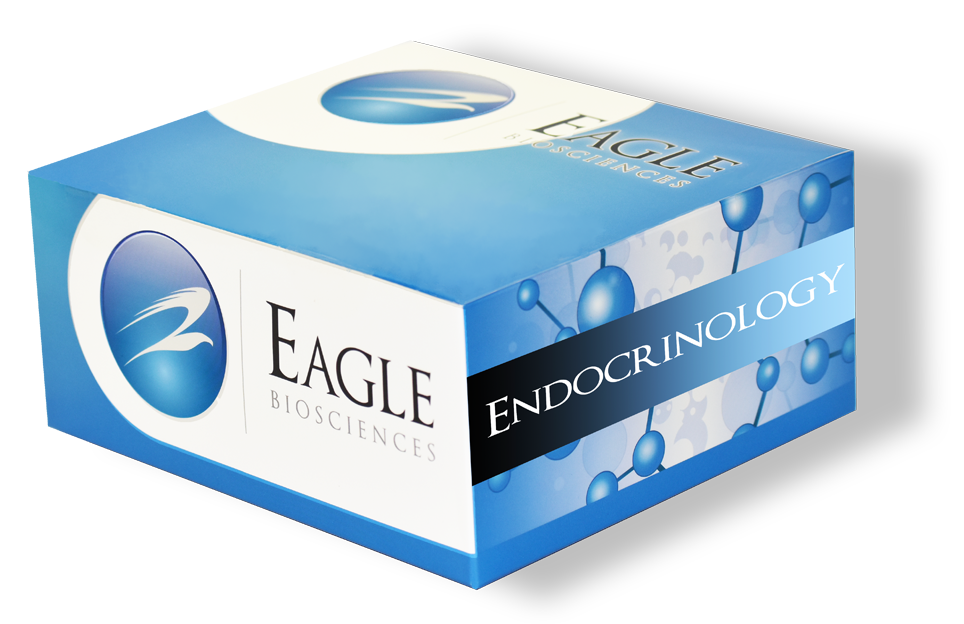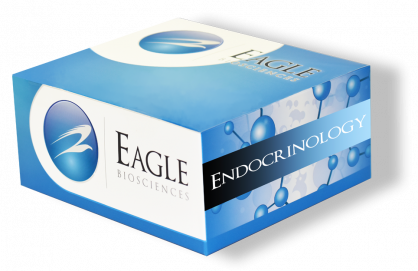Leptin ELISA Assay
Leptin ELISA Assay is For Research Use Only
Size: 1×96 wells
Sensitivity: 0.5 ng/mL
Dynamic Range: 1–100 ng/mL
Incubation Time: 105 minutes
Sample Type: Serum
Sample Size: 20 µl
Controls Included
Assay Principle for Human Leptin ELISA
The principle of the Leptin ELISA Assay enzyme immunoassay test follows a typical two-step capture or ‘sandwich’ type assay. The assay makes use of two highly specific monoclonal antibodies: A monoclonal antibody specific for leptin is immobilized onto the microplate and another monoclonal antibody specific for a different epitope of leptin is conjugated to biotin. During the first step, leptin present in the samples and standards is bound to the immobilized antibody and to the biotinylated antibody, thus forming a sandwich complex. Excess and unbound biotinylated antibody is removed by a washing step. In the second step, streptavidin-HRP is added, which binds specifically to any bound biotinylated antibody. Again, unbound streptavidin-HRP is removed by a washing step. Next, the enzyme substrate is added (TMB), forming a blue coloured product that is directly proportional to the amount of leptin present. The enzymatic reaction is terminated by the addition of the stopping solution, converting the blue colour to a yellow colour. The absorbance is measured on a microtiter plate reader at 450 nm. A set of standards is used to plot a standard curve from which the amount of leptin in patient samples and controls can be directly read.
SPECIMEN COLLECTION AND STORAGE
Approximately 0.1 mL of serum is required per duplicate determination. Collect 4–5 mL of blood into an appropriately labelled tube and allow it to clot. Centrifuge and carefully remove the serum layer. Store at 4°C for up to 24 hours or at -10°C or lower if the analyses are to be done at a later date. Consider all human specimens as possible biohazardous materials and take appropriate precautions when handling.



